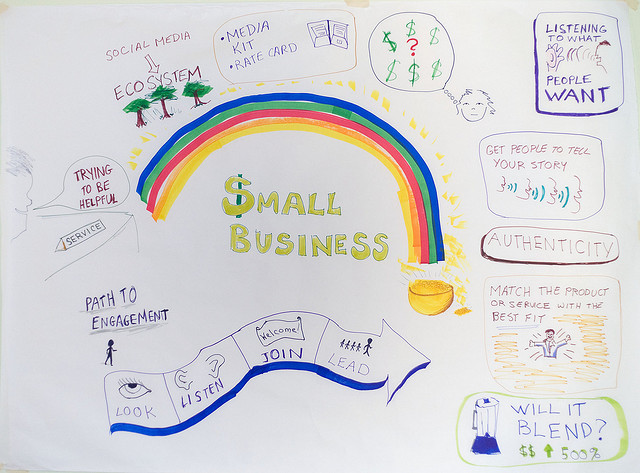The difference between a startup and a small business is more than mere semantics. A startup is about launching a new business model, whereas a small business has a business model. Startups are focused on hyper-growth, whereas small businesses tend to have more modest growth projections. Profit is often optional for many startups, whereas small business is all about the cash flow and margins. Then there is the fact that startups are what the cool kids do, whereas small businesses are for the “moms & pops” of the world (if you believe the tech media, that is).
However, the reality is that most startups aren’t killing it and they’re not getting investor interest. It’s one thing to get a small seed round going, but it’s an entirely different story when getting that next round closed with VC’s. Only a few startups will secure a Series A round, while the rest of the field scrambles to survive week by week.
You need to have a contingency plan. Maybe, if you’re early enough and still have cash in the bank, you can pivot your idea. Or you could pray for an acquisition offer. Or maybe you really are stuck and feel that winding down the startup is the best bet. There is no shame in that, and often the experience can lead to something infinitely better down the road.
However, you are stubborn one. You just know that your vision needs to happen and that there’s a big enough market that wants your creation. You still have the drive and the passion to build your idea into a massive business and spread your idea to the world. The only problem is that you’re running out of cash, and running out of cash is pretty much the nail in the coffin for startups. What do you do?
Replace small business with startup. What I mean by this is that you need to change your mentality to that of a small business. You need to start thinking like a business owner that is insanely focused on revenues, costs, cash flow and margins. Where can you add revenue streams? What costs can you cut out? How can you stem the tide of money flowing out? Can you increase the amount of money to take in per transaction or sale?
It is revenue however that is the most critical element in staying alive. This means you may have to do things you swore not to do. Here are a few thoughts.
- Put ads up on your site or mobile app.
- Set yourself up as an affiliate and pass along traffic.
- Add a services component to the business.
- Increase your fees. Sell a “pro” version of your product.
- Sell add-ons to supplement your product.
- Start charging all users (or set it up as a “pay what you want” concept to get more buy in).
- Ask users for donations. Set up a “donate” feature to allow users to chip in (use something like Flattr).
- Offer a purchasable “value-add” newsletter with unique content. Implement a paywall to access premium content.
- Leverage off-line revenue opportunities related to your online product, like a concierge service or onsite tech support.
- Gear up low-to-no-cost marketing channels like email and social media to drive traffic and sales.
- Offer consulting services to leverage your expertise (be careful not to get sucked into the consulting vortex).
- Add an ecommerce option such as a company store.
- Set up a marketplace exchange.
- Turn a potential feature request or new product idea into a crowdfunding campaign.
These are just a few ideas that you can mix and match and modify to best match your business. The point is that the ideas for generating revenue are limitless, if you brainstorm enough. As long as the ideas have enough income generating potential (however small) and come at a decent margin (the whole point is to get to cash flow positive), you might just be able to guide yourself out of trouble and keep your startup afloat long enough for things to turn around. You took a long shot when you launched your startup, so there’s no reason to stop taking long shots if it keeps you in the game. You just have to be willing to expand your options.
This article was originally published on Strong Opinions, a blog by Birch Ventures for the NYC tech startup community.
Image credit: CC by Dean Meyers




